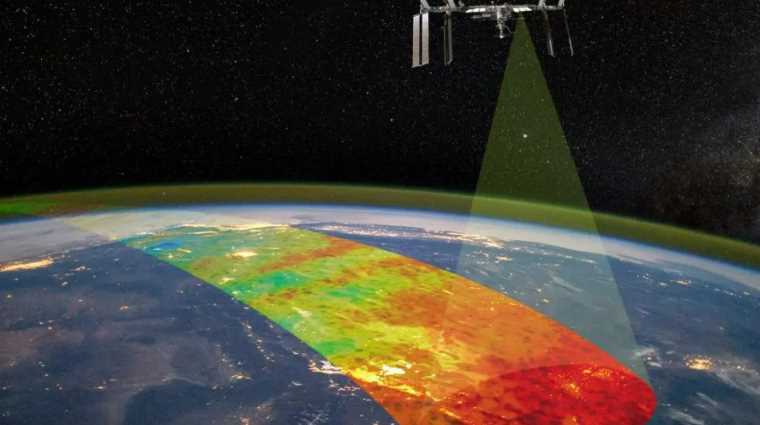When Hurricane Helene slammed into Florida’s coast on September 26th, NASA says its Atmospheric Waves Instrument (AWE) spotted a surge of gravity waves 55 miles above Earth’s surface.
According to the space agency, the cutting-edge instrument mounted on the International Space Station (ISS) detected the flurry of gravity waves in the mesosphere as they tore their way up from the Earth’s surface due to the extreme forces generated by Helene.
In a statement announcing the detection, NASA said that gathering this specific type of high-altitude weather information with AWE “helps us better understand how terrestrial weather can affect space weather, [which is] part of the research NASA does to understand how our space environment can disrupt satellites, communication signals, and other technology.”
Along with the announcement, NASA provided a video showing the movement of the gravity waves as they passed over the Earth’s surface along the same path as Helene. For clarity, the gravity waves were artificially colored in red, yellow, and blue based on their respective size, power, and dispersion.
“Like rings of water spreading from a drop in a pond, circular waves from Helene are seen billowing westward from Florida’s northwest coast,” explained Ludger Scherliess, the AWE’s principal investigator at Utah State University, in the same statement.
Although similar in name to gravitational waves, which are ripples in the fabric of space/time first predicted by Albert Einstein over 100 years ago before scientists confirmed their existence in 2016, gravity waves refer to disturbances in a fluid medium that result from gravity’s restorative influence. NASA describes gravity waves as “ripple-like patterns in the air generated by atmospheric disturbances such as violent thunderstorms, tornadoes, tsunamis, wind bursts over mountain ranges, and hurricanes.”
The AWE was first installed on the exterior of the ISS by astronauts in November 2023. According to the project’s mission page, the complex instrument helps answer questions about atmospheric dynamics far above the planet’s surface by “studying colorful bands of light in Earth’s atmosphere, called airglow.” Airglow is a faint light emitted by gases found at these extremely high altitudes.


“This is the first time that AGWs, especially the small-scale ones, will be measured globally at the mesopause, the gateway to the lsic] space,” said Michael Taylor, professor of physics at Utah State University and principal investigator for the mission at the time of the instrument’s launch. “More importantly, this is the first time we will be able to quantify the impacts of AGWs on space weather.”
While most weather occurs in the lowest layer of Earth’s atmosphere, the troposphere, the gravity waves spotted by the AWE happen in the third layer, the mesosphere. The mesosphere lies above the stratosphere from 31 to 55 miles above the surface. Because the air at this altitude is too thin for conventional aircraft, activity this high up is best observed from space.
The AWE uses the Advanced Mesospheric Temperature Mapper (AMTM) to measure gravity waves. According to NASA, this instrument “consists of four identical telescopes, which together comprise a wide-field-of-view imaging radiometer, an instrument that measures the brightness of light at specific wavelength ranges.”
The gravity waves observed during Helene occurred in the infrared wavelength, making them invisible to the human eye. However, the effects of these gravity waves can sometimes be seen in the clouds of the upper atmosphere.


Fortunately, NASA says the faint glow of these infrared signals is at its brightest in the cold environment mesosphere, where temperatures can reach as low as -150 Fahrenheit. This instrument also detects gravity waves at much smaller scales, something previous satellites equipped to view these waves had difficulty accomplishing.
“AWE will be able to resolve waves at finer horizontal scales than what satellites can usually see at those altitudes, which is part of what makes the mission unique,” said Ruth Lieberman, AWE mission scientist at NASA’s Goddard Space Flight Center in Greenbelt, Maryland at the time of its launch.
NASA says this research will help determine the effects of gravity waves generated in the Earth’s atmosphere on satellites, communications, and other space-based technologies in the future. For now, the agency says these images are among the first released by the AWE team, “confirming that the instrument has the sensitivity to reveal the impacts hurricanes have on Earth’s upper atmosphere.”
Christopher Plain is a Science Fiction and Fantasy novelist and Head Science Writer at The Debrief. Follow and connect with him on X, learn about his books at plainfiction.com, or email him directly at christopher@thedebrief.org.

